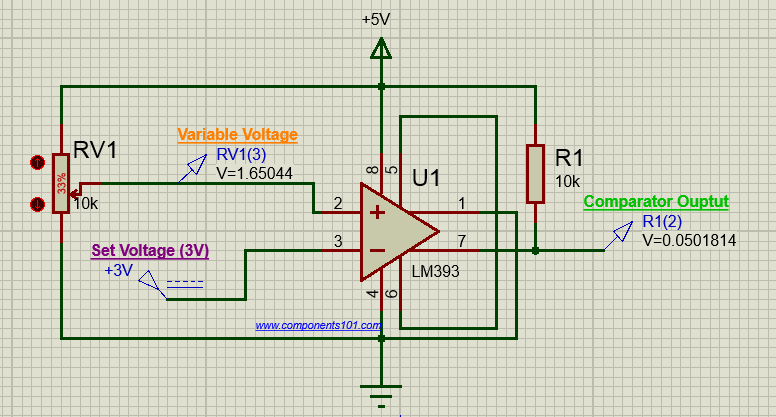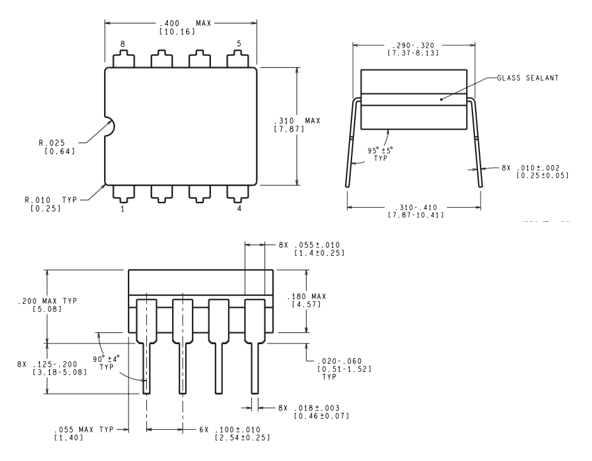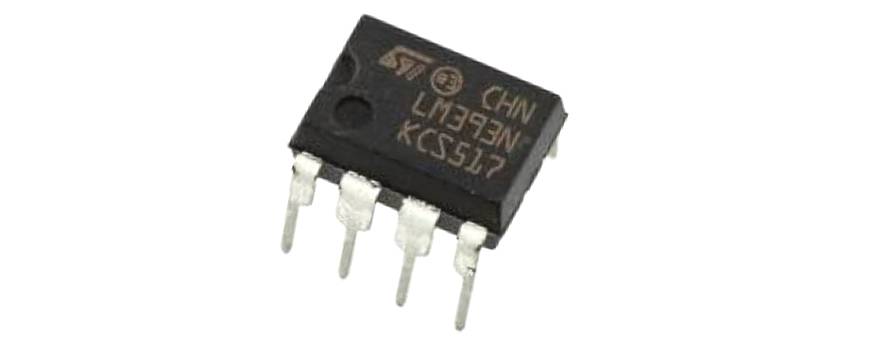LM393 - Low Offset Voltage Dual Comparator IC
The LM393 is a Dual in package comparator IC, meaning the IC has two comparators inside a single 8-pin package.
Pin Configuration
|
Pin Number |
Pin Name |
Description |
|
1 |
OUTPUT1 |
Output of Op-Amp 1 |
|
2 |
INPUT1- |
Inverting Input of Op-Amp 1 |
|
3 |
INPUT1+ |
Non-Inverting Input of Op-Amp 1 |
|
4 |
VEE,GND |
Ground or Negative Supply Voltage |
|
5 |
INPUT2+ |
Non-Inverting Input of Op-Amp 2 |
|
6 |
INPUT2- |
Inverting Input of Op-Amp 2 |
|
7 |
OUTPUT2 |
Output of Op-Amp 2 |
|
8 |
VCC |
Positive Supply Voltage |
LM393 Differential Comparator features and specifications
- Dual Comparator in a single package
- Wide power supply Range
- Singe supply – 2V to 36V
- Dual supply – ±1V to ±18V
- Drain Current of only 0.4mA
- Input Offset Voltage is ±5mV maximum
- Power Dissipation: 660mW
- Can Drive most of the TTL and MOS loads
- Output can be Isolated from System Ground
- Low Offset Voltage and current
LM393 Equivalents
Alternatives Comparator Op-Amp IC
LM393 Comparator Introduction
The LM393 IC can be considered as the equivalent comparator version of the most popular LM358 Op-Amp. While any Op-Amp can be made to work as a voltage comparator, the LM393 proves itself to be advantages by providing an open collector output making it suitable to drive loads.
The output transistor can drive loads upto 50V and 50mA which is suitable for driving most of the TTL, MOS and RTL loads. The transistor can also make the Load to be isolated from the system ground. So if you are looking for a Voltage comparator to drive loads of these specifications then this IC might be the right choice for you.
How to use LM393
The LM393 applications are very similar to the LM311 Comparator IC, only the specifications change a bit. Other than that the LM311 can be considered as a close replacement for LM393. Like all voltage Comparators the LM393 also has an Inverting Pin and a Non-Inverting Pin. If the voltage at the Non-Inverting Terminal (pin 2) is high than the Inverting Terminal (pin 2) the output (pin 7) will also be high else the output will be low.
Let us assume the LM393 is powered with the +5V supply voltage circuit since this is the most used design for digital circuits. In this type, the VCC+ (pin 8) is connected to +5V supply voltage and the VCC (pin 4) is grounded to hold it at 0V potential. A sample circuit is shown below in which the Inverting Terminal is set to 2.5V and the Non-Inverting Terminal voltage is varied using a potentiometer. You can note that the Output voltage stays high when pin 2 has higher voltage than pin 7 and vice versa.

The pins 5 and 6 on the Op-amp are used to set the balance voltage if you want to manually adjust the DC-Offset voltage. Normally these pins are not used since the Input Offset itself is much better controlled. When not in use the pins 5 and 6 should be shorted as shown above. You can also notice that the Collector pin (pin 7) of the transistor is used for output and the emitter pin (pin 1) is grounded this type of design is called “Collector output Circuit”, however this does not have to be the case always.
Applications
- Voltage Comparator circuits
- Can drive Relay, Lamp, Motor Etc
- Zero Crossing detector
- Peak voltage Detector
- High Voltage protection/Warning
- Oscillator circuits
2D-Model












